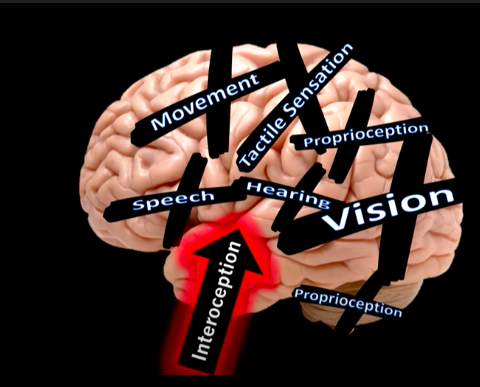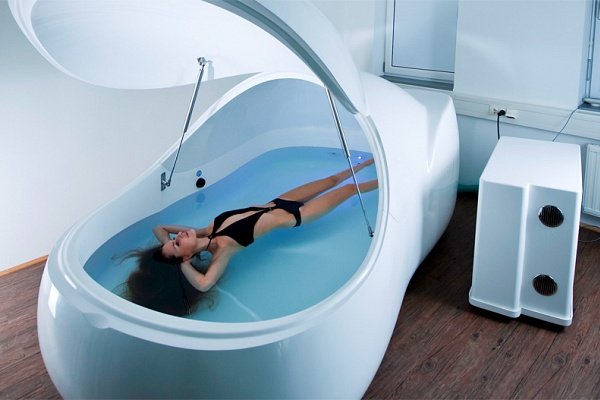22 October 2021, by i-sopod
Post Traumatic Stress Disorder (PTSD) is a psychiatric disorder which affects people who’ve been through a life-changing traumatic event. The condition often involves reminders of the event through flashbacks and nightmares, and can cause panic attacks, severe anxiety and difficulty sleeping.
We know the main benefits of float therapy, but neuroscientists are studying floatation with brain scans, to understand better the extent of what floating can do for different mental conditions.
PTSD and the Military
When it comes to PTSD, most people think of the military, and for good reason. In the US, up to 87% of veterans have been exposed to traumatic, potentially life altering events.
Since 9/11, more US veterans have committed suicide than those who die in war zones. Much of that is a result of trauma related mental health conditions.
War veterans can experience PTSD symptoms for up to 50 years. At least 12.7% of US veterans are reported to have PTSD, and that’s only the ones who have been diagnosed. With avoidance of the trauma being very common, it’s expected that the real number of undiagnosed cases is in fact much higher.
I have been dealing with PTSD since coming back from Iraq in 2004. I have found that floating has not only enabled me to deal and confront what caused the PTSD, but it has also helped me with other areas of my life. Brody Hawatt, US veteran
Back in 2017, the US Navy SEALs installed float tanks for their recruits, and since then the word has been spreading about the benefits, both for veterans and those still in service.
On a side note, the armed forces aren’t just floating for trauma and stress relief. One unexpected way the SEALs have been using floatation sessions is to improve language learning, as it’s proven to radically cut the time it takes for the brain learn new things. Now there’s food for thought…
How Does Floating Help?
PTSD is not just something that happens to war veterans – it can affect anyone who’s lived through a traumatic event.
Usually, people with PTSD turn to talking therapy and mindfulness practices to work through the trauma and deal with the symptoms. These routes doesn’t always get to the core of the problem however; it turns out, thought-based therapies aren’t always enough.
This is because anxiety disorders (which include PTSD, Generalised Anxiety Disorder, Panic Disorder, Agoraphobia, Social Anxiety Disorder, and Major Depression) affect ancient parts of our biology, not just the brain. When you have PTSD or any other anxiety disorder, much of the trauma and tension gets stored in the body, so you need to go deeper into your physiology to really heal.
When in a float tank, you’re in an environment where all sensory stimulation from the outside world is removed. This activates the parasympathetic nervous system, which brings your body out of ‘fight or flight’ and into a ‘rest and digest’ state.
For someone suffering from PTSD, this shift in state is key to reducing the nightmares and night sweats, and improving your quality of sleep.
I’ve been diagnosed with PTSD and have been experiencing pretty severe chronic pain for the past 3 years. I tried for the longest time to go through the mainstream health system to get help but all I got was recommendations for CBT, talk therapy.etc. […] The only relief I have found is lying in a float tank which I now do 4x a week for 3 hrs. This is pretty much the only therapy which has been of any help in my journey of healing. Reddit user
Another reason why floatation is so effective is to do with a change in your brainwaves as you float. Floating frees up a lot of your brain circuitry as it puts the brain into a theta state. Theta brainwaves are related to healing: deepening your level of relaxation, boosting the immune system and more.
Being in a theta state is like being in deep meditation, which actually allows you to reprogram your subconscious. It’s as though space is being created in the brain, and you’re able to become more aware of the thoughts that come up. Being in this state, your brain is essentially learning how to relax.
Maybe it’s this ‘mental space’ which allows the SEALs to learn new languages with ease?Floatation is Sensory Enhancement, Not Deprivation
I’ve had a severe dissociative disorder as part of complex PTSD for over 20 years. To date, I’ve done numerous floats in the last 5 months. This is the only treatment which has made any difference at all to my condition – and I’ve tried everything, including ECT, TMS and ketamine. My suicidal thoughts and urges are under some control for the first time in over 5 years. Youtube user
There’s a lot of evidence of floating being effective for anxiety disorders, but no brain scans have been carried out yet to see exactly what happens when someone with PTSD floats.
Dr Justin Feinstein is changing that. Feinstein leads the Float Clinic and Research Center at the Laureate Institute for Brain Research, and his work is dedicated to understanding the neurological benefits of float therapy. Dr Feinstein has done extensive research into how floating helps with anxiety disorders, and he’s now looking closely at float therapy for PTSD.

One of Dr Feinstein’s main points is this: Floatation REST does reduce sensory stimulation, but to call it sensory deprivation is misleading. It’s true that your senses are cut off from external stimulation, but as a result of that, your brain tunes into the internal sensations of the body more.
What do we mean by internal sensations? Feeling your heartbeat, and your breath as it travels through the body; this is what is known as interoception – an awareness of the body from the inside. In this way, floating can actually be considered a sensory enhancing experience. Dr Feinstein sees this to be the one of the most effective aspects of floatation for anxiety disorders.
Interoceptive awareness is part of what gets you into a meditative state when floating. As you feel your heartbeat more strongly, and can focus fully on your breath, meditating becomes not only easier, but almost natural. As your brain shifts into theta, you slip into a meditative state without even trying. This is extremely helpful for someone with an anxiety disorder, which can make meditation especially difficult.
For some people with a condition like PTSD, the prospect of intensely feeling your heartbeat and breath could sound anxiety-inducing. However, when this interoceptive awareness is coupled with muscular tension dissolving and your body effortlessly relaxing, it’s a very unique experience.
Being in the float tank actually has the potential to create a new association in the brain, linking the awareness of cardio-respiratory sensations with relaxation, not anxiety. This is part of what makes the floating experience so impactful: it provides you with the opportunity to learn how to deal with stress for yourself.
We’re not claiming that float therapy can cure severe anxiety conditions like PTSD, but it can definitely help. One of the most common reasons people with anxiety disorders either go undiagnosed or don’t receive treatment is they want to resolve the issue on their own. Floatation enables you to do exactly that: take agency over your own healing, in an environment that enables you to learn how to start dealing with the anxiety and trauma.
‘Floating allows those who may feel ashamed or hesitant to ask for help to feel empowered because they will ultimately be contributing to their own relief and journey of overcoming these mental battles.’ Megan Henry, US Veteran and olympic athlete






